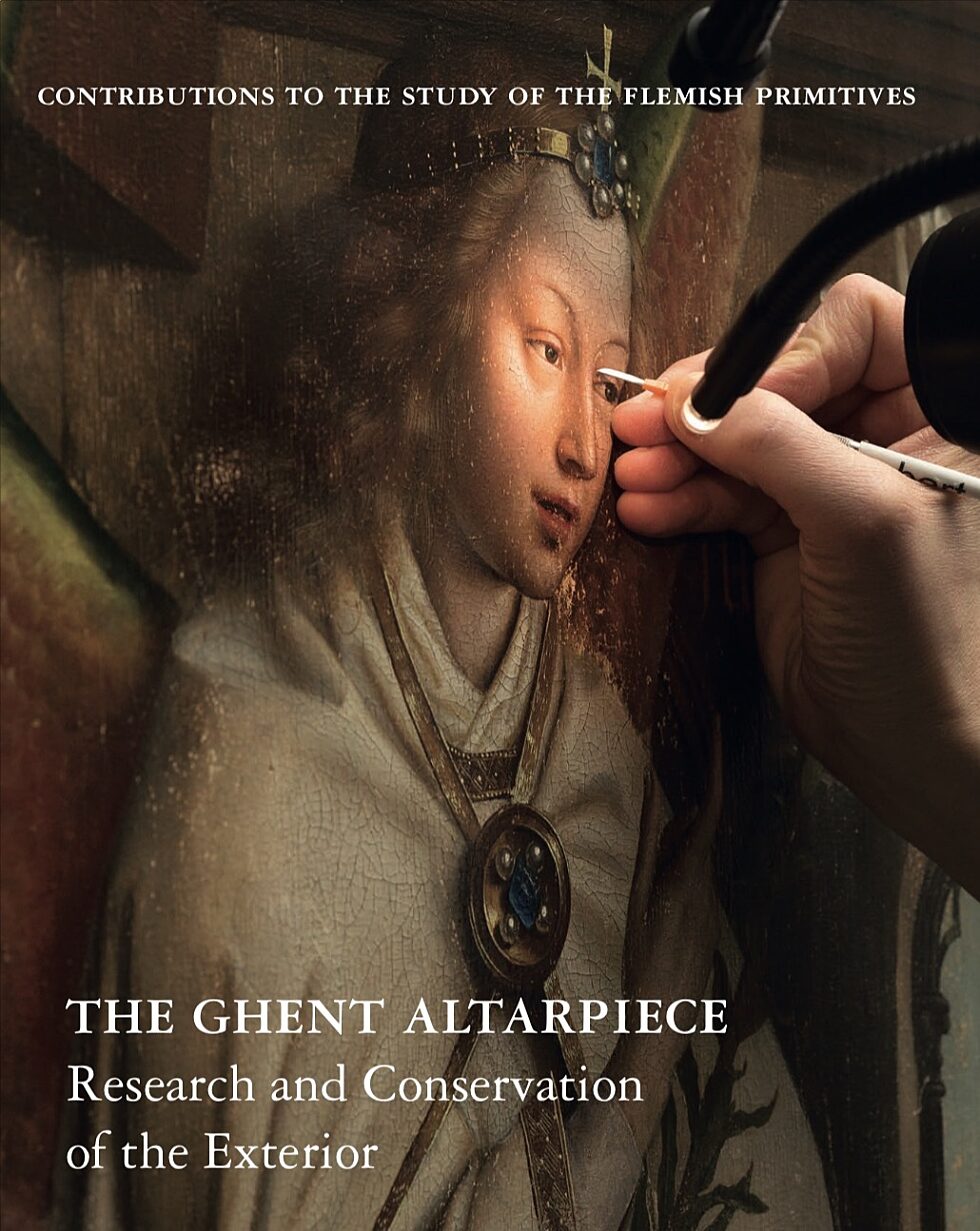Conservation of the Ghent Altarpiece continues to reveal the unparalleled virtuosity of the Van Eyck brothers
As with the first two phases of the conservation-restoration project of the Ghent Altarpiece (the exterior from 2012 to 2016 and the lower register of the interior from 2016 to 2019), the KIK-IRPA team has encountered extensive overpainting from the 16th century. The removal of the thick and often heavily darkened layers of paint requires significant time and concentration but gradually reveals the subtle nuances so characteristic of the Van Eyck brothers' painting technique.
The conservation-restoration of the Ghent Altarpiece (1432), the world-famous masterpiece by brothers Hubert and Jan van Eyck, began in 2012 at the Museum of Fine Arts (MSK) in Ghent. The project is now in its third and final phase, focusing on the upper panels of the interior: the Virgin, the Deity, and John the Baptist, surrounded by music-making and singing angels, as well as the panels depicting Adam and Eve.
The seven panels transcend the earthly spaces depicted in the rest of the altarpiece, ascending into the celestial realm. To convey this divine splendour, the Van Eyck brothers employed unique techniques that appear nowhere else on the other paintings of the Ghent Altarpiece, such as gold and silver leaf glazed with translucent colours, and complex applied tin-leaf brocades in relief. Cleaning, conserving, and restoring these elements, much like the entirety of the altarpiece, requires exceptional precision and extensive scientific expertise.
As with the first two phases of the conservation-restoration project (the exterior from 2012 to 2016 and the lower register of the interior from 2016 to 2019), the KIK-IRPA team has encountered extensive overpainting from the 16th century. Scientific research revealed that these layers were applied over older damage, earlier restorations, and accumulated dirt and varnish. This shows that the Ghent Altarpiece underwent multiple rounds of restoration and varnishing before being significantly overpainted in the first half of the 16th century. At that time, painters-“restorers” didn’t merely cover minor damages but repainted large portions of the panels.
Chemical analysis of these overpaints uncovered materials characteristic of 16th-century artworks but unknown in the Flemish art of Jan and Hubert van Eyck’s era. These include the green pigment posnjakite and ground sodium-rich glass, presumably added to accelerate the drying of the paint. Such glass was only introduced in the Southern Netherlands in the 16th century.
Tests confirmed that the non-original layers can be safely removed using the same methodologies as in phases 1 and 2 of the project, without risking damage to the original Eyckian paint surface. These scientific procedures have again been endorsed by the International Commission of Experts (art historians, chemists and conservators with an expertise in the art of Van Eyck and the 15th century that have been following the project since 2012), paving the way for the careful removal of the thick, pasty and often heavily darkened oldest overpaint. This labour-intensive process is gradually revealing the subtle nuances characteristic of the Van Eycks' mastery.
The cloaks of John the Baptist, the Virgin Mary, and the Deity were most heavily affected by 16th-century overpainting. Roughly half of these additions have now been removed from the surface, restoring the vibrancy of the original colours and bringing these central figures into harmony again with the rest of the altarpiece. The panels depicting Adam and Eve, mainly covered with layers of varnish and blotchy retouches, have been found to be remarkably well-preserved in their original state. Following cleaning, they now display the unparalleled pictorial mastery of the Van Eyck brothers in full brilliance. Cleaning of the two panels featuring angels is also well underway.
“In the course of Phases 1 and 2, the KIK-IRPA team of restorers and scientists developed knowledge and skills that make them uniquely qualified to address the conservation challenges of the Ghent altarpiece. Their understanding of the remarkable creative process of the Van Eycks, as well as the work of the 16th-century and later restorers, has been developed to a new and unsurpassed level.”
On November 4, the International Commission of Experts convened at the conservation studio in the MSK (Museum of Fine Arts) Ghent. The group emphasized the importance of removing the 16th-century overpainting to restore the original glory and radiance of the Van Eycks’ work. The commission praised the team of KIK-IRPA scientists and conservators for their unmatched expertise, which has been honed over years of dedicated work on this masterpiece.
Thanks to this meticulous approach, experts and the public can finally witness the original Ghent Altarpiece for the first time in centuries. Old damages in the original paint layers will eventually be retouched using reversible materials, and the seven panels will receive a new varnish layer at the end of the treatment. Visitors can experience this unique conservation process firsthand at the open studio at the MSK Ghent, where the team will continue their work throughout 2025 and 2026.


The Ghent Altarpiece
More KIK-IRPA news

Safe cleaning strategies for the gilded surfaces of the Ghent Altarpiece
On 30-31 October 2025, the Art Salinity and Acidity Project (ASAP), the Materials Science for Conservation Research (MatCoRe) unit – jointly supported by KIK-IRPA and the Université libre de Bruxelles (ULB) – and the Ghent Altarpiece conservation-restoration team came together for a unique two-day collaboration focused on the gilded areas of the paintings.

Research on heritage paper bleaching presented at Icon Conference
At the end of October, Camille Jallu, paper conservator who graduated from ENSAV La Cambre, presented a poster at the Icon (Institute of Conservation) Book and Paper Group Conference "Conservation Uncovered: Investigation and Discovery in Treatment and Analysis" (The National Archives, Kew, London).





